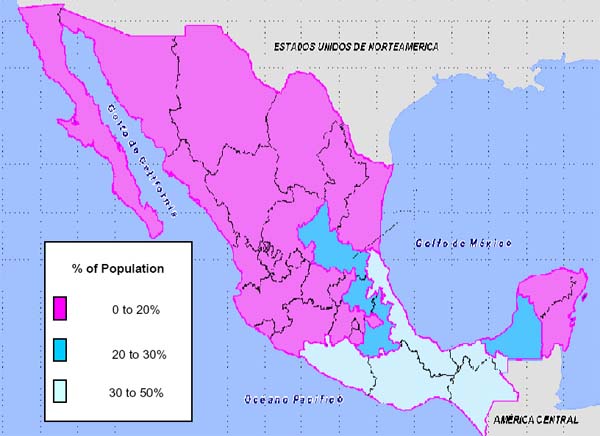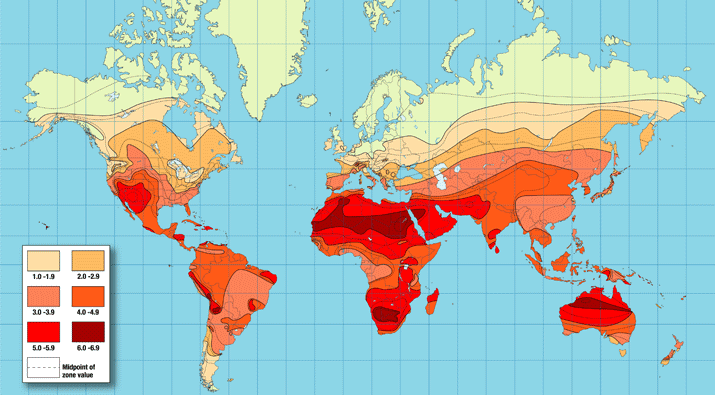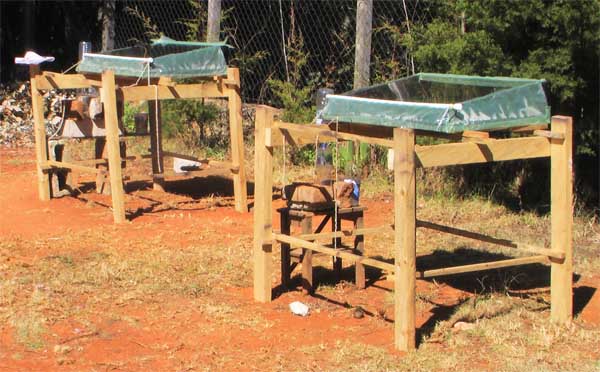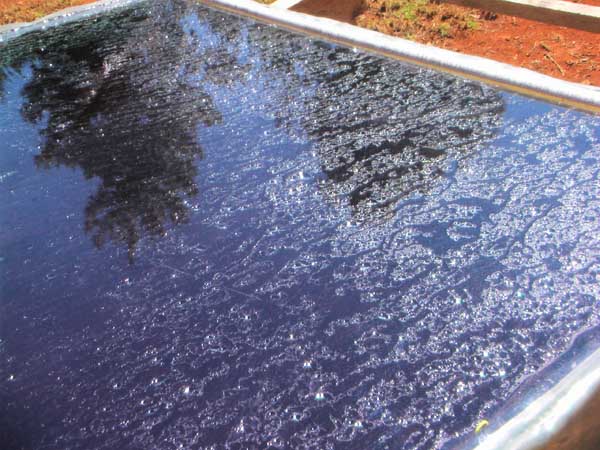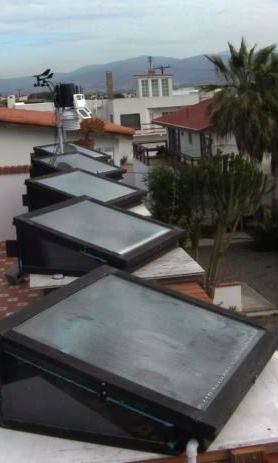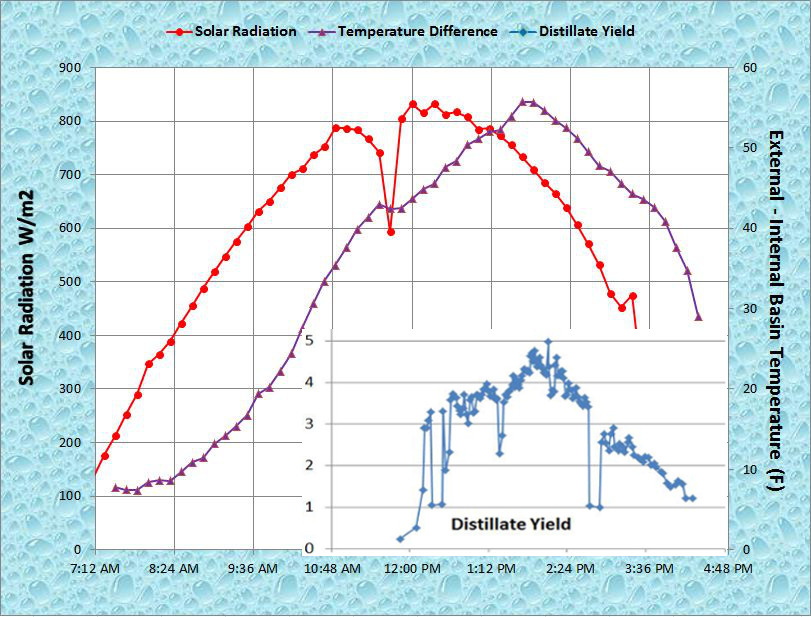
Solar Radiation and Solar Distiller Performance. Outset: The temperature difference between the water inside of the solar distiller basin and the external ambient temperature (purple) lags solar radiation (red) by about two hours. Inset: Distillate yield (blue) shows the performance of this .5 m2 distiller in mL/minute. Yield can be seen to highly correlated with the temperature difference between the external ambient temperature and the basin temperature.
|
